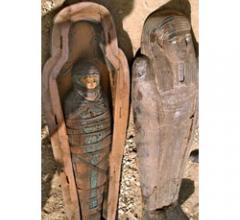December 7, 2009 - A new integrated hybrid interventional table offers head-to-toe tilting and side-to-side cradling to meet the needs of both interventionalists and surgeons during hybrid intervention.
December 7, 2009 - Introduced this past year and highlighted last week at RSNA 2009 was Infinitt’s Cardiology PACS, a Web-based suite of clinical and reporting tools for cardiac, cardiovascular and vascular Imaging. The cardiology system integrates with Infinitt’s RIS-PACS.
December 4, 2009 – A new MR/CT and angiography fusion navigation system was introduced at RSNA 2009 this week to better guide percutaneous oncology and cardiology procedures.
Providing exceptional cardiovascular care for patients to achieve the best possible outcomes is the number one goal for ...
December 3, 2009 – Vendor readiness, lack of staff and access to capital will make implementation of the HIT Standards Committee standards in time to meet currently established deadlines unlikely, say most Healthcare CIOs.
December 4, 2009 – In an effort to lower clinician radiation exposure in the cath lab, a new device displays the real-time dose each clinician receives and alerts them when they enter the radiation field. The DoseAware system was introduced by Philips Healthcare at the 2009 Radiological Society of North America (RSNA) annual meeting this week in Chicago.
December 2, 2009 - There is an increasing focus on clinical solutions for abdominal aortic aneurysms (AAA) and thoracic aorta aneurysms (TAA) treatment planning for surgical and partially interventional procedures.
Cardiac positron emission tomography (PET) is growing in popularity among cardiologists because it provides the ability ...
December 2, 2009 - With smaller vessels, lower bone density and less body fat, pediatric patients have different imaging needs than adults. Pediatric patients frequently have difficulty holding their breath or staying still during a scan, creating the need for CT technology tailored for their needs.
November 23, 2009 — SNM will hold its Conjoint Mid-Winter Meetings on Jan. 27-Feb. 2, 2010, at the Albuquerque Convention Center in Albuquerque, N.M.
November 17, 2009 — The recent discovery of 3,500-year-old Egyptian mummies showing signs of hardening of the arteries indicates that heart disease is not just a condition found in modern humans as commonly believed.
When performing radiofrequency (RF) ablation to treat cardiac arrhythmia, medical professionals must balance the safety ...
November 18, 2009 — Results of preclinical studies with CXL-1020 demonstrate beneficial effects across the board on the treatment of acute decompensated heart failure (ADHF). All three major facets of the pathophysiology — contractability, relaxation and vascular load — showed improvements with no significant safety liabilities.
November 21, 2009 – The first randomized intracardiac arrest cooling study performed using a intra-nasal cooling method showed promising results. Findings included much faster and earlier cooling in treated patients and significantly higher neurologically intact survival to discharge rate in many patients.
November 21, 2009 — A drug used to treat erectile dysfunction may improve heart function in children and young adults with single ventricle congenital heart disease, according to researchers from The Children’s Hospital of Philadelphia.
Change Healthcare Cardiology Hemodynamics is an integrated hemodynamic monitoring system for monitoring vital signs and ...
November 21, 2009 – The Food and Drug Administration (FDA) recently announced that it is reviewing data from a study suggesting patients using the drug sibutramine may have a higher number of cardiovascular events than patients using a placebo.
November 29, 2009 - A new advanced visualization and decision support software upgrade is designed to improve management of CT stroke protocols and 3D or 2D viewing. It also provides electronic medical record (EMR) integration.
November 24, 2009 - Seventy million dollars in grant money will go to community college training programs for health information technology professionals, and $10 million is designated to develop educational materials to support these programs.


 December 06, 2009
December 06, 2009












